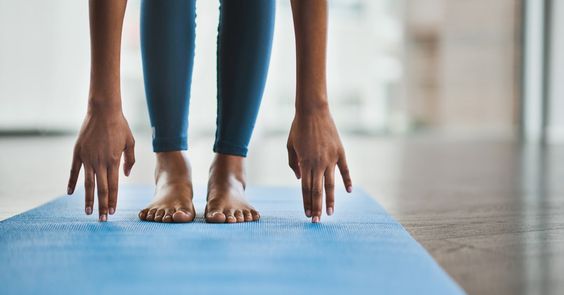Introduction
Flexibility, often overlooked in the fitness world, is a crucial component of overall health and athletic performance. It refers to the range of motion in your joints and muscles, allowing you to move freely and comfortably. Whether you're an athlete striving for peak performance or simply looking to improve your daily life, incorporating flexibility training into your routine offers numerous benefits.

Improved flexibility not only enhances your athletic abilities but also contributes to better posture, reduced risk of injury, and increased blood flow and circulation. By dedicating time to flexibility training, you can experience greater ease of movement, improved athleticism, and a reduced likelihood of experiencing pain or discomfort.
Understanding the Benefits of Flexibility Training
Flexibility training offers a wide range of benefits, impacting various aspects of your well-being. Let's delve into some key advantages:
1. Enhanced Range of Motion: Regular flexibility exercises help increase the range of motion in your joints, allowing for greater freedom of movement during physical activities and everyday tasks.
2. Reduced Risk of Injury: Flexible muscles are less prone to strains, sprains, and other injuries. Improved flexibility helps your body handle the stresses of exercise and movement more effectively.
3. Improved Athletic Performance: Increased flexibility can enhance athletic performance by allowing for greater power, speed, and agility. It also contributes to better technique and coordination.
4. Reduced Muscle Soreness and Pain: Flexibility training can alleviate muscle soreness and pain by improving blood flow and reducing muscle tension.
5. Improved Posture: Tight muscles can contribute to poor posture. Flexibility exercises help lengthen and relax these muscles, promoting better alignment and reducing strain on your spine.
Incorporating Flexibility Training into Your Routine
Integrating flexibility training into your fitness regimen is easier than you might think. Here are some effective methods:
1. Static Stretching: Hold each stretch for 20-30 seconds, focusing on deep breathing and relaxation. Target major muscle groups like hamstrings, quads, hip flexors, and shoulders.
2. Dynamic Stretching: Incorporate controlled movements that mimic the exercise you're about to perform. This helps warm up your muscles and improve range of motion.
3. Yoga and Pilates: These practices emphasize flexibility, strength, and balance, making them excellent choices for improving overall mobility.
4. Foam Rolling: This self-massage technique helps release muscle tension and improve flexibility by applying pressure to trigger points.
Remember to consult with a healthcare professional or certified fitness trainer before starting any new exercise program, especially if you have any underlying health conditions.





